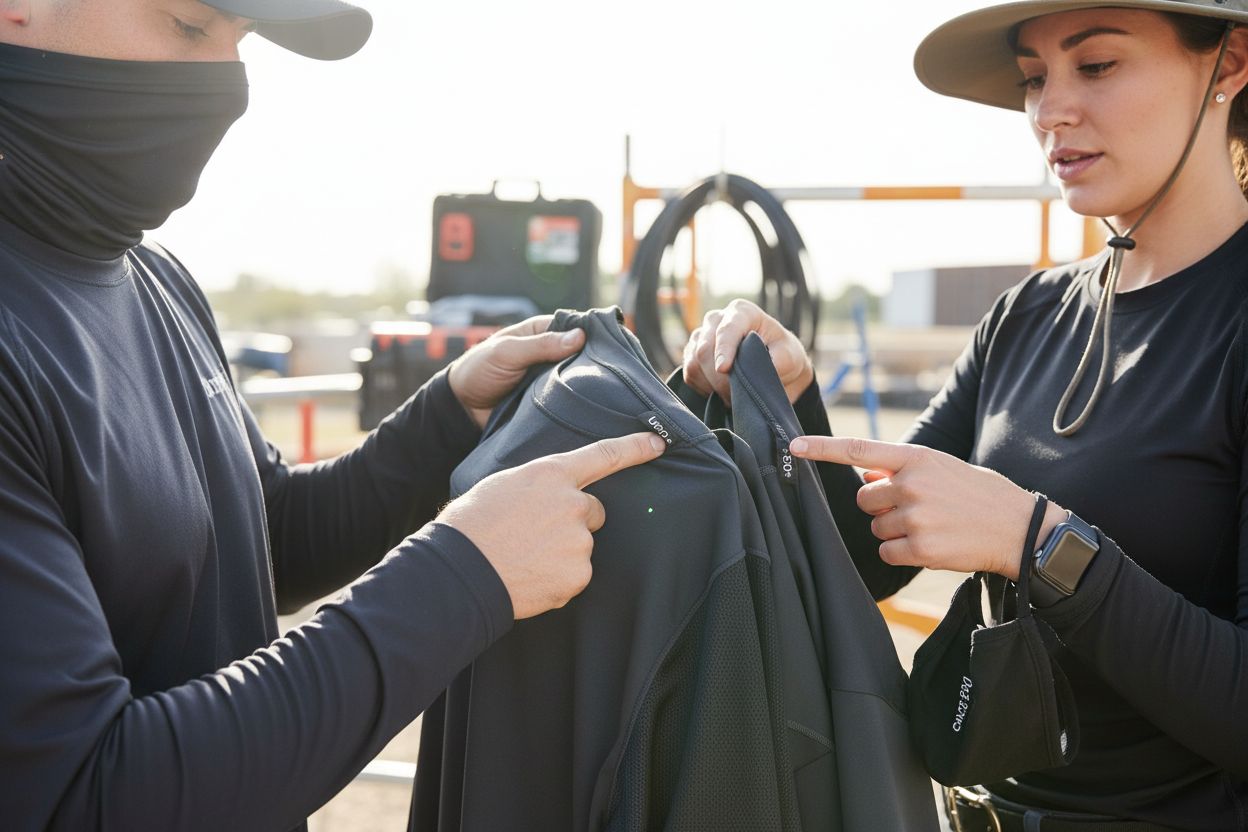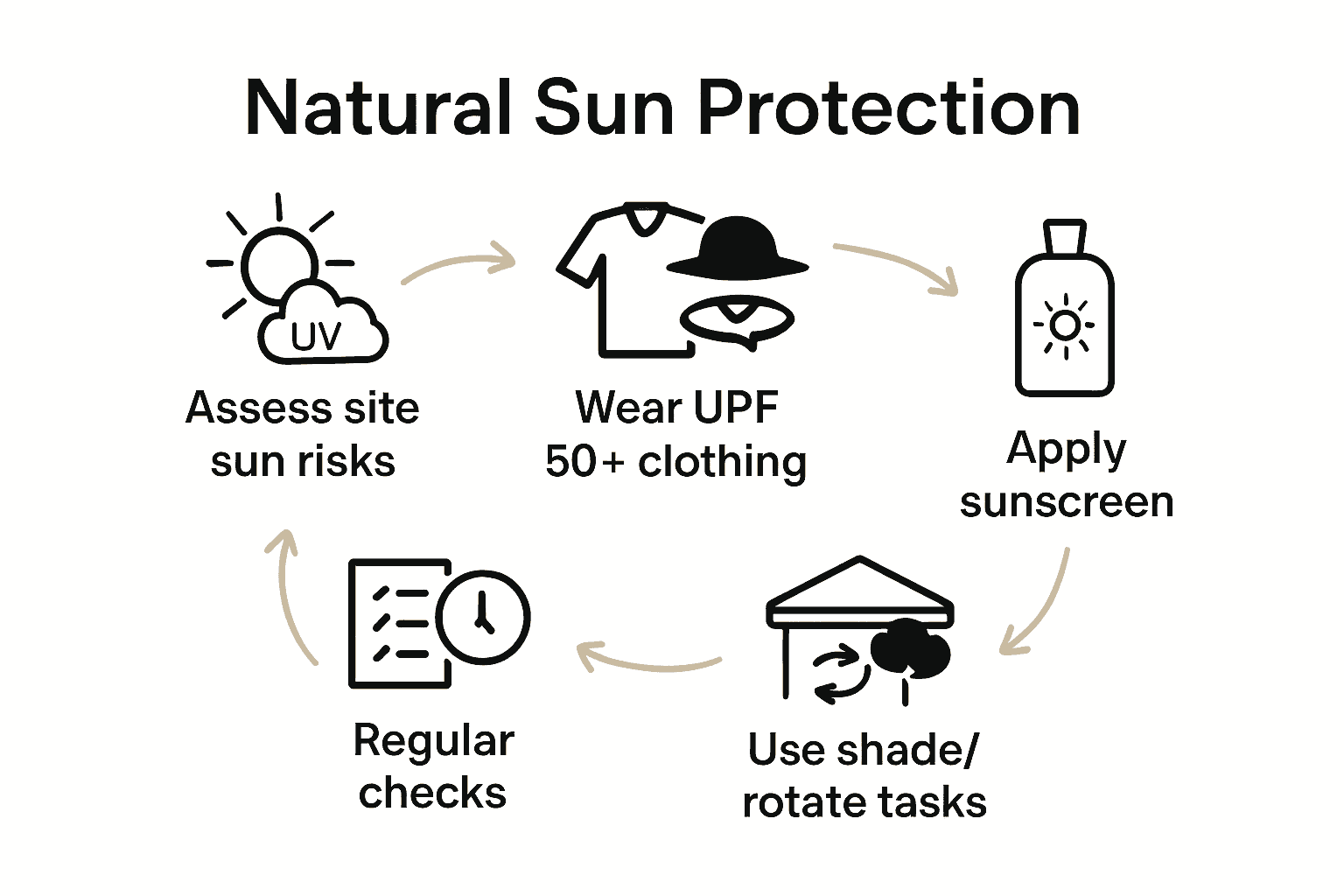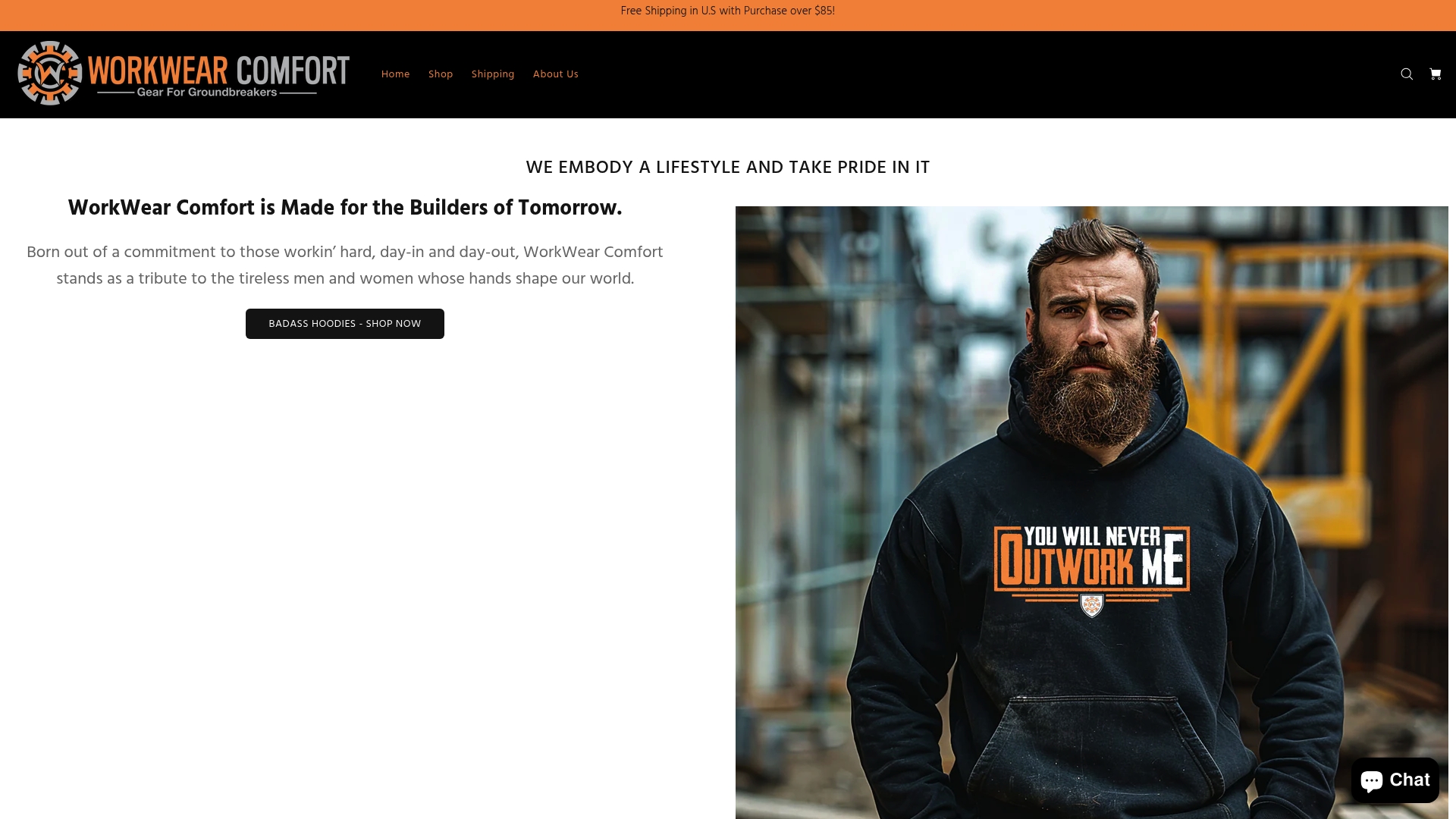Nearly three in four outdoor workers receive more UV exposure than recommended, putting their long term health at risk. Many people underestimate how quickly the sun can cause lasting damage while working outside. Understanding where and how sun risks show up in your work environment can help you take smart steps to stay safe and comfortable all day long.
Quick Summary
| Key Point | Explanation |
|---|---|
| 1. Assess your work environment for sun risks | Evaluate UV exposure risks by monitoring areas with direct sunlight or reflective surfaces to develop safety strategies. |
| 2. Wear UPF-rated protective clothing | Choose clothing with UPF 50+ ratings for optimal UV protection while ensuring comfort and breathability during work. |
| 3. Apply broad-spectrum sunscreen properly | Use SPF 30+ broad-spectrum sunscreen and reapply it every two hours to protect all exposed skin areas effectively. |
| 4. Implement shade and scheduling strategies | Utilize existing structures for shade and adjust the work schedule to minimize exposure during peak sun hours. |
| 5. Verify your sun protection frequently | Set reminders to regularly check your protection levels and make adjustments as needed to ensure consistent safety. |
Table of Contents
- Step 1: Assess Work Environment For Sun Risks
- Step 2: Select And Wear Upf-Rated Protective Clothing
- Step 3: Apply Broad-Spectrum Sunscreen Effectively
- Step 4: Implement Shade And Scheduling Strategies
- Step 5: Verify Sun Protection Throughout The Workday
Step 1: Assess work environment for sun risks
Knowing your work site’s sun exposure is crucial for protecting yourself from harmful ultraviolet radiation. This step helps you understand potential risks and develop smart strategies to stay safe while on the job.
Start by carefully examining your specific work environment. According to the Centers for Disease Control and Prevention (CDC), outdoor workers face significant UV risks especially between 10 a.m. and 4 p.m. during summer months. Pay close attention to surfaces that might reflect and intensify sunlight like concrete, metal equipment, white painted structures or light colored ground surfaces.
Make a detailed visual assessment of your workspace. Walk around and identify areas with direct sun exposure and potential shade zones. Check how sunlight moves across your work site throughout the day. Look for natural shade providers like large trees or temporary structures where you might take breaks. Note areas where reflection could increase your UV exposure even if you are not in direct sunlight.
Use a simple UV index monitoring tool or smartphone app to track daily radiation levels. These tools provide real time information about sun intensity and help you plan protective measures. Some advanced apps even offer hourly UV risk predictions specific to your geographic location.
Pro Tip: Remember that UV rays penetrate even on cloudy days. Never assume you are safe just because the sky looks overcast.
If you want more detailed guidance on selecting protective workwear, read our guide on staying cool in hot weather which includes additional sun protection strategies.
In the next step, you will learn specific techniques for creating personal sun protection strategies based on your workplace assessment.
Step 2: Select and wear UPF-rated protective clothing
Choosing the right protective clothing is your first line of defense against harmful sun exposure at work sites. This section will guide you through selecting clothing that keeps you safe and comfortable while on the job.
Start by understanding UPF ratings. UPF stands for Ultraviolet Protection Factor and works like sunscreen for your clothing. Look for garments with UPF 50+ ratings which block approximately 98% of ultraviolet radiation. Not all work clothes offer this protection so you will need to be intentional in your selection.
When shopping for protective workwear, prioritize tightly woven fabrics in darker colors. Darker colors absorb more UV rays and prevent them from reaching your skin. Lightweight materials like polyester or nylon with special sun protective treatments work best. Long sleeve shirts and full length pants provide maximum coverage even in hot working conditions.
Consider specialized workwear designed specifically for outdoor environments. Brands now create breathable protective clothing that keeps you cool while blocking harmful rays. Look for features like ventilation panels mesh inserts and moisture wicking properties that make sun protective gear comfortable during intense physical work.

Pro Tip: Check clothing labels for explicit UPF ratings and choose garments that specify their sun protection level.
If you want comprehensive information about selecting the right work attire, check out our guide to understanding workwear which offers detailed insights into protective clothing strategies.
In the next step, you will learn additional techniques for creating a comprehensive sun protection strategy during outdoor work.
Step 3: Apply broad-spectrum sunscreen effectively
Sunscreen is your critical personal defense against harmful ultraviolet radiation during outdoor work. This step will help you apply sunscreen correctly to maximize protection and minimize skin damage.
Choose a broad spectrum sunscreen with at least SPF 30 that protects against both UVA and UVB rays. Water resistant formulas work best for active outdoor workers who sweat or encounter moisture during their shifts. Look for sunscreens specifically designed for extended outdoor exposure that offer longer lasting protection.
Apply sunscreen generously and thoroughly at least 15 to 20 minutes before sun exposure. Most people apply far less sunscreen than recommended. You need approximately one ounce (a full shot glass) to cover your entire exposed body. Focus on often missed areas like ears neck backs of hands and feet. Reapply every two hours or immediately after heavy sweating or water exposure.
Dont rely solely on sunscreen in your work clothing. Combine sunscreen application with your UPF rated protective gear for comprehensive protection. Use sunscreen on all exposed skin areas including face neck and hands even when wearing long sleeve shirts.
Pro Tip: Store your sunscreen in a cool place at your work site and set a timer to remind yourself about reapplication during long shifts.
If you want more information about sun protection strategies for outdoor workers, read our guide on staying cool in hot weather which offers additional protective tips.
In the next step you will learn about creating additional physical barriers against sun exposure during work hours.
Step 4: Implement shade and scheduling strategies
Managing sun exposure goes beyond personal protection and requires strategic planning of your work environment. This step focuses on creating smart shade solutions and adjusting work schedules to minimize ultraviolet radiation risks.
According to recent occupational health research, implementing targeted shade and scheduling strategies can significantly reduce worker sun exposure. Start by identifying natural and artificial shade zones at your work site. Look for existing structures like large trees temporary canopies or equipment that can provide intermittent cover during peak sunlight hours.
Create a rotation system that limits direct sun exposure during the most intense UV radiation periods typically between 10 a.m. and 4 p.m. If possible coordinate tasks so workers alternate between sunny and shaded work areas. Some worksites can schedule more intensive outdoor tasks during early morning or late afternoon when sunlight is less direct and intense.
Consider portable shade solutions like pop up canopies lightweight sun shelters or mobile work stations with built in UV protection. These flexible options allow you to create shade wherever your work demands. Invest in lightweight portable umbrellas or shade cloths that can be quickly deployed during breaks or less intensive work periods.
Pro Tip: Coordinate with your team and supervisor to develop a comprehensive sun protection workflow that balances productivity and worker safety.
If you are looking for more detailed strategies about managing outdoor work environments, explore our guide to workwear essentials which offers insights into professional workplace protection.
In the next step you will learn about monitoring and maintaining your sun protection strategy to ensure long term health and safety.
Step 5: Verify sun protection throughout the workday
Maintaining consistent sun protection requires active monitoring and strategic check ins during your work shift. This step will help you develop a reliable system for ensuring continuous protection against harmful ultraviolet radiation.
Set periodic reminders on your phone or work watch to perform quick sun protection assessments every two hours. During these brief checks evaluate your current protection level. Confirm that your sunscreen is still effective check for any clothing shifts that might expose additional skin and assess whether you need to reapply protective products or adjust your working location.
Pay special attention to physical signs of potential sun damage. Watch for skin reddening increased temperature in exposed areas or a feeling of heat and tightness. These early warning signals indicate that your current protection might be inadequate. Immediately seek shade adjust your clothing or reapply sunscreen when you notice these symptoms.
Create a simple workplace sun protection checklist that you can quickly reference. Include key items like sunscreen reapplication time tracking clothing coverage evaluation and shade rotation. Keep this checklist easily accessible perhaps laminated or saved on your mobile device for quick reference during busy work periods.
Pro Tip: Develop a buddy system with coworkers where you help each other check sun protection levels and watch for potential overexposure risks.
If you want more comprehensive information about maintaining workplace safety, check out our guide to understanding workwear which provides additional professional protection insights.
By consistently verifying your sun protection you are taking proactive steps to safeguard your long term health and professional performance.
Here’s a summary of sun protection strategies by step:

| Step | Main Focus | Example Actions |
|---|---|---|
| Assess Environment | Identify UV risks | Monitor UV index Map sun/shade areas |
| Wear UPF Clothing | Maximize coverage | Choose UPF 50+ shirts Wear long sleeves/pants |
| Apply Sunscreen | Protect exposed skin | Use SPF 30+, reapply every 2 hours |
| Implement Shade/Scheduling | Limit sun exposure | Use shade structures Rotate work tasks |
| Verify Protection | Maintain safety | Set reminders Check coverage regularly |
Take Control of Sun Safety at Work with Trusted Gear
You have learned how natural sun protection starts with assessing risks, choosing UPF-rated clothing, and staying diligent every single workday. If you are frustrated by uncomfortable work clothes that fail to shield your skin or tired of guessing whether your gear can keep up with intense sun exposure, the risks become personal. Your skin health, long-term comfort, and confidence on the job depend on practical, reliable solutions.

You work hard in tough environments. Now you deserve apparel built to protect you in every condition. At WorkwearComfort.com we provide durable UPF 50+ workwear designed for real-world sun safety. Our premium hoodies, women’s workwear, and high-performance essentials give you confidence to take on outdoor work without compromise. From staying cool in hot weather to understanding which workwear fits your job, you will find answers and products that match your commitment to resilience. Browse our proven gear today and make every shift safer.
Check out WorkwearComfort.com now and put advanced sun protection to work for you while supplies last.
Frequently Asked Questions
How can I assess sun exposure risks at my worksite?
To assess sun exposure risks, visually evaluate your work environment for areas with direct sunlight and reflective surfaces. Walk around to identify shade zones and monitor how sunlight moves across your site throughout the day.
What should I look for when selecting UPF-rated clothing for sun protection?
When selecting UPF-rated clothing, prioritize garments with a UPF 50+ rating that blocks about 98% of UV radiation. Choose tightly woven fabrics in darker colors to maximize coverage, and consider breathable materials that enhance comfort during hot weather.
How should I apply sunscreen effectively to prevent sun exposure at work?
Apply broad-spectrum sunscreen with at least SPF 30 generously to all exposed skin about 15–20 minutes before going outside. Make sure to reapply every two hours, especially after sweating or if you’ve been in the water.
What shade solutions can I implement to reduce sun exposure during work shifts?
To reduce sun exposure, utilize natural shade sources like trees or artificial structures such as canopies. Additionally, consider scheduling work tasks to avoid peak sun intensity times, typically between 10 a.m. and 4 p.m.
How often should I check my sun protection measures during the workday?
Set reminders to check your sun protection measures every two hours during your work shift. Quickly evaluate current coverage and whether you need to reapply sunscreen or adjust your clothing based on the UV exposure you’re experiencing.
What strategies can I use to create a sun-safe work environment?
Create a sun-safe environment by identifying shade zones and rotating tasks between sunny and shaded areas. Implement portable shade solutions like pop-up canopies and collaborate with your team to establish a workflow that prioritizes sun safety.
Recommended
- Best Workwear for Hot Weather: Stay Cool & Protected in 2025 - WorkWear Comfort
- 7 Essential Tips for Choosing Work Wear for Hot Weather – WorkWearComfort
- 7 Essential Tips for Choosing Workwear in Hot Weather – WorkWearComfort
- What Is Workwear? A 2025 Guide for Hardworking Professionals - WorkWear Comfort


